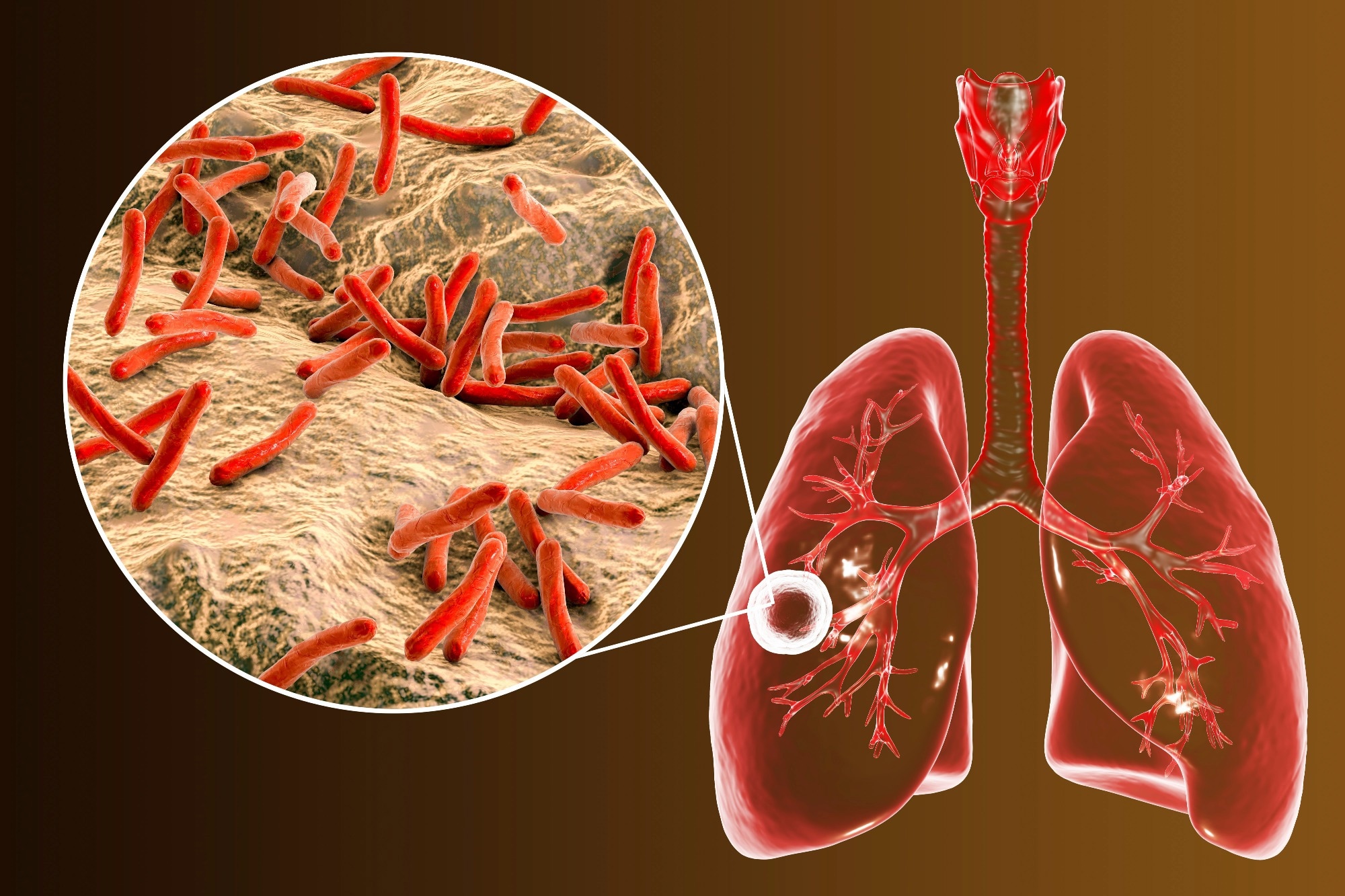In a recent study posted to the Preprints with The Lancet SSRN* server, a team of researchers in China developed a machine learning-based diagnostic tool to detect tuberculosis and drug-resistant tuberculosis using nanoparticle-enhanced laser desorption/ionization mass spectrometry (NPELDI MS) to determine metabolic fingerprints from serum samples.
 Study: Machine Learning to Serum Metabolic Fingerprints for Tuberculosis and Drug-Resistant Tuberculosis Diagnosis: An Observational Study. Image Credit: Kateryna Kon / Shutterstock
Study: Machine Learning to Serum Metabolic Fingerprints for Tuberculosis and Drug-Resistant Tuberculosis Diagnosis: An Observational Study. Image Credit: Kateryna Kon / Shutterstock

 *Important notice: Preprints with The Lancet / SSRN publishes preliminary scientific reports that are not peer-reviewed and, therefore, should not be regarded as conclusive, guide clinical practice/health-related behavior, or treated as established information.
*Important notice: Preprints with The Lancet / SSRN publishes preliminary scientific reports that are not peer-reviewed and, therefore, should not be regarded as conclusive, guide clinical practice/health-related behavior, or treated as established information.
Background
After coronavirus disease 2019 (COVID-19), tuberculosis is the most common cause of death due to an infectious agent, and the emergence of drug-resistant Mycobacterium tuberculosis has exacerbated public health concerns. Unfortunately, statistics indicate that close to 40% of tuberculosis cases are not diagnosed in time for early treatment.
Current tuberculosis detection methods include immunological exams, detecting the etiological agent from sputum smears, and molecular biology methods. While sputum smear tests are fast, their specificity and sensitivity in detecting tuberculosis are low, whereas mycobacterial cultures, which are accurate, require longer processing times and are difficult for large-scale, same-day testing of tuberculosis patients in general hospitals. Furthermore, the molecular diagnosis of tuberculosis and rifampicin-resistant tuberculosis from sputum samples presents a challenge due to high costs and varying sensitivity to extrapulmonary tuberculosis. Therefore, a feasible testing method with high sensitivity and specificity that can be used to rapidly detect tuberculosis and drug-resistant tuberculosis is essential.
About the study
In the present study, the researchers designed an NPELDI MS platform with machine learning algorithms to simultaneously detect tuberculosis and drug-resistant tuberculosis based on metabolomic fingerprints of serum samples. When M. tuberculosis parasitizes the macrophages in the host, it affects the host’s metabolism, and the metabolites that are formed from various metabolic reactions indicate the response to environmental, proteomic, and genomic changes. Identification and quantification of these metabolic fingerprints can be used to detect and diagnose various diseases.
For this observational study, the researchers recruited 110 pulmonary tuberculosis patients and 118 healthy individuals between 2020 and 2021. Tuberculosis was diagnosed based on positive sputum smears, M. tuberculosis cultures, M. tuberculosis nucleic acid detection, chest radiography, and pulmonary histopathological diagnoses. Drug sensitivity testing or Gene Xpert testing for rifampicin-resistant M. tuberculosis was used to classify the tuberculosis patients.
Serum samples were collected for NPELDI MS analysis to determine metabolic fingerprints, which were processed using machine learning algorithms to identify biomarkers for drug-sensitive and drug-resistant tuberculosis.
Results
The results reported that the NPELDI MS-based machine learning method could differentiate tuberculosis patients from healthy individuals with 85% sensitivity and 100% specificity. The method was also able to distinguish between rifampicin-sensitive and rifampicin-resistant tuberculosis patients with 87.5% sensitivity and 85.7% specificity.
The metabolite biomarkers used for detecting tuberculosis and drug-resistant tuberculosis comprised lipids such as monoglyceride, phosphatidylcholine, ceramide, triglyceride, cholesteryl ester, amino acids, phosphates, octacosanoic acid, and other basic compounds. Biomarker analyses revealed that M. tuberculosis infections dysregulate lipid metabolism pathways such as sphingolipid and glycerophospholipid metabolism. Phosphates such as nicotinamide adenine dinucleotide phosphate and all-transheptaprenyl diphosphate were abnormally expressed, and glutathione concentrations were lower in tuberculosis patients.
The biomarkers used to differentiate between rifampicin-sensitive and rifampicin-resistant tuberculosis patients included uric acid, taurine, ascorbic acid, and homocysteine, which were elevated in rifampicin-resistant tuberculosis patients. The researchers believe that sulfur amino acids such as homocysteine and taurine may indicate drug-resistant tuberculosis as they are associated with antioxidant and membrane-stabilizing activity. These amino acids are thought to protect the liver from the toxic effects of antituberculosis medications such as rifampicin and isoniazid. Homocysteinemia, the increase in homocysteine levels in the serum or plasma, is often reported during antituberculosis therapy.
The study had a few limitations, such as the smaller sample size of rifampicin-resistant tuberculosis patients, as only 58 serum samples were included in the analysis to determine biomarkers to differentiate drug-resistant tuberculosis patients from the drug-sensitive ones, of which 28 were from rifampicin-sensitive patients. This could have affected the accuracy of the diagnosis.
Conclusions
To summarize, the findings identified biomarkers panels and serum metabolic fingerprints for diagnosing tuberculosis from serum samples with high specificity and sensitivity, and for differentiating rifampicin-resistant tuberculosis patients from those who were sensitive to rifampicin. The machine learning algorithms and the NPELDI MS method using optimized ferric particles could help in the early and accurate detection of tuberculosis and improve the prognosis and care for tuberculosis patients.

 *Important notice: Preprints with The Lancet / SSRN publishes preliminary scientific reports that are not peer-reviewed and, therefore, should not be regarded as conclusive, guide clinical practice/health-related behavior, or treated as established information.
*Important notice: Preprints with The Lancet / SSRN publishes preliminary scientific reports that are not peer-reviewed and, therefore, should not be regarded as conclusive, guide clinical practice/health-related behavior, or treated as established information.
Journal reference:
- Preliminary scientific report.
Liu, Yajing, Ruimin Wang, Chao Zhang, Lin Huang, Chengyue Zhang, Yiqing Zeng, Hongjian Chen, Kun Qian, and Pintong Huang. 2023. “Machine Learning to Serum Metabolic Fingerprints for Tuberculosis and Drug-Resistant Tuberculosis Diagnosis: An Observational Study.” Papers.ssrn.com. Rochester, NY. February 24, 2023. https://papers.ssrn.com/sol3/papers.cfm?abstract_id=4364878, http://dx.doi.org/10.2139/ssrn.4364878